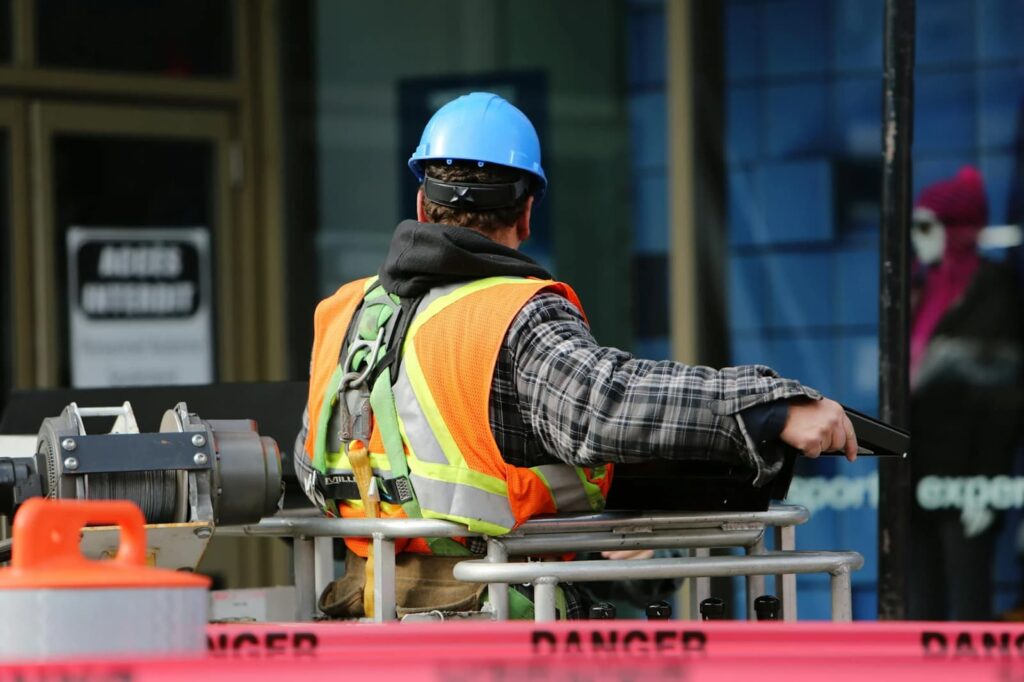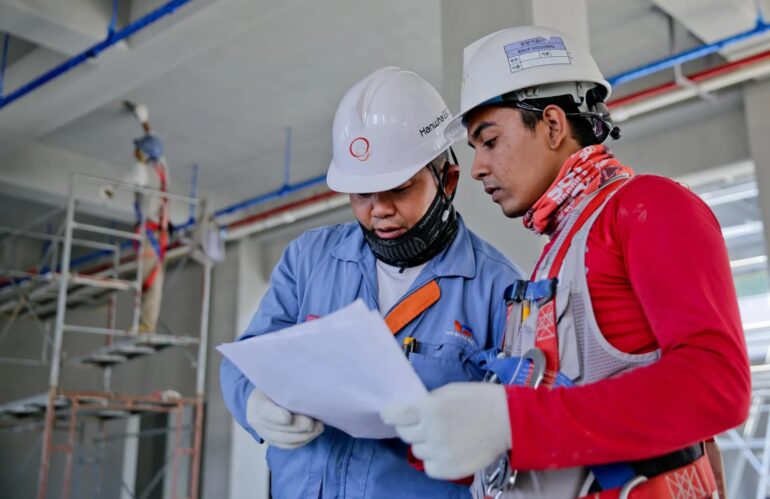Construction sites present daily risks to worker safety. They are one of the most hazardous work environments across industries. But there’s good news: effective safety measures can significantly reduce both injuries and workers’ compensation claims, creating positive outcomes for workers and companies. Read on to understand this relationship and make informed decisions about safety investments and program implementation.
Safety Measures That Make a Difference
When construction companies implement comprehensive safety programs, they see measurable results. Basic requirements like personal protective equipment (PPE) — hard hats, safety glasses, and steel-toed boots — prevent many common injuries. But the most successful programs go beyond the basics.
Regular safety training keeps workers alert to potential hazards and teaches proper techniques for tasks like lifting heavy materials and operating equipment. Companies that conduct weekly toolbox talks and hands-on demonstrations report fewer incidents than those relying solely on annual training sessions. They also see lower than average workers’ comp settlements due to the lower severity of injuries if they do happen.
Equipment maintenance also plays a crucial role. Well-maintained tools and machinery reduce accident risks substantially. Simple steps like checking power tools before use, replacing frayed cords, and servicing heavy equipment on schedule prevent many workplace accidents.
Site organization and cleanliness, often overlooked aspects, contribute significantly to accident prevention. Clear walkways, proper material storage, and waste management reduce trip hazards and improve overall site safety.
The Financial Impact of Prevention
Every dollar invested in safety-related programs can save companies between $4 and $6 in workers’ compensation costs. These savings come from:
- Reduced premium costs due to fewer claims
- Lower medical expenses from prevented injuries
- Less lost work time and improved productivity
- Decreased costs for temporary replacement workers
- Fewer legal expenses from injury-related lawsuits
- Reduced administrative overhead for managing claims
- Lower training costs for replacement workers.
Small construction firms often hesitate to invest in such programs, viewing them as expensive extras. However, even basic improvements like adding guardrails around elevated work areas or upgrading fall protection equipment can prevent costly accidents. The key lies in identifying high-risk areas and addressing them systematically.
Creating an Effective Safety Culture
The most successful construction companies build safety into their daily operations. This means:
- Setting clear expectations: Workers at all levels understand safety requirements and consequences for violations. Written policies provide specific guidelines for common tasks and situations.
- Encouraging reporting: Employees feel comfortable pointing out hazards without fear of retaliation. Some companies offer incentives for identifying and reporting potential issues before accidents occur.
- Providing proper resources: Companies invest in quality equipment and maintain adequate supplies. They replace worn equipment and meet new safety standards.
- Leading by example: Supervisors and management follow all safe conduct protocols, showing commitment from the top down. They participate in safety meetings and wear proper PPE at all times on site.
- Monitoring and updating: Safety programs undergo frequent review and adjustment based on new data and incident patterns. This includes tracking near-misses and minor incidents to identify areas for improvement.
Looking at Long-Term Benefits
Beyond immediate cost savings, strong programs deliver lasting advantages:
- Improved reputation: Companies known for protecting workers attract better employees and win more contracts. This competitive advantage often leads to better project opportunities and higher profit margins.
- Higher worker retention: Employees stay longer with companies that demonstrate concern for their well-being. This reduces training costs and maintains a more experienced workforce.
- Better project outcomes: Safer sites have fewer delays and quality issues. Workers who feel protected perform better and pay more attention to detail.
- Enhanced compliance: Regular safe conduct practices help companies meet regulatory requirements and avoid fines. This becomes increasingly important as safety regulations continue to evolve.
- Stronger team morale: When workers feel protected, they develop stronger loyalty to their employers and better cooperation with colleagues. This improves overall project coordination and efficiency.

Practical Steps for Implementation
Construction companies seeking to reduce workers’ compensation claims through improved safety should:
- Assess current risks and incident patterns:
- Review past accident reports and identify common causes
- Conduct thorough site safety audits
- Survey workers about concerns.
- Develop clear, written safety policies:
- Create specific guidelines for different types of work
- Establish clear reporting procedures
- Define consequences for violations.
- Provide comprehensive training:
- Offer regular updates on safety procedures
- Include hands-on practice sessions
- Address language barriers in training materials.
- Install proper equipment:
- Invest in quality PPE
- Maintain and replace equipment regularly
- Update it as new technology becomes available.
- Create reporting systems:
- Implement easy-to-use hazard reporting tools
- Establish clear communication channels
- Protect workers who report concerns.
- Monitor results and adjust as needed:
- Track safety metrics regularly
- Gather feedback from workers
- Update procedures based on new data.
To Sum Up
The connection between workplace safety and workers’ compensation claims is clear: better protection means fewer injuries and lower costs. Construction companies that make safety a priority see positive results in both human and financial terms. By implementing proper measures and maintaining consistent programs, construction firms can protect their workers and improve their bottom line.





